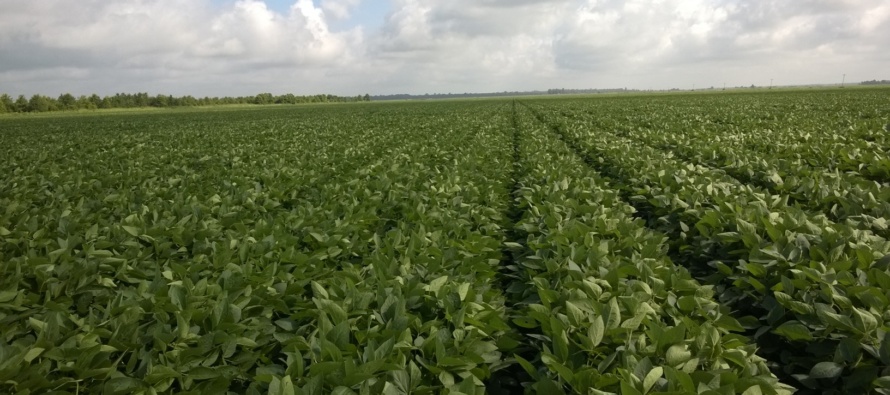Flood Irrigated Soybean Yield Considerations

Related Articles
- 2010 Row Crop Short Course Video Links 0
- Calcium and Magnesium For Mississippi Crops 0
- March 11 Precision Agriculture Workshop 0
Latest Tweets
Traditionally, many rice farmers chose to flood irrigate their soybeans. Rice farmers were accustomed to pulling levees in rice fields, so it was a natural fit to irrigate soybeans in the same fashion. With the decreasing water levels in the Mississippi Alluvial River Valley aquifer and state regulators responding by requiring minimum levels of irrigation water use efficiency practices, the Irrigation Team was requested to investigate furrow and flood irrigated soybeans here in the Delta.
During the summers of 2016-2018, twenty-six Delta farms participated in a study to compare the water use and yield of furrow and flood irrigated soybean fields. Each farmer was requested to furnish two fields, one being furrow irrigated and one flood irrigated. All fields in this study were land-formed clay soils. The fields were required to be side by side or in relatively close proximity with the same planting date and variety. All cultural practices were to be performed similar. The MSU Researcher installed Watermark moisture sensors in both fields and maintained a record of soil moisture levels. The MSU Research made the irrigation decision on the furrow irrigated field while the farmer made the decision on the flood irrigated field. Irrigation water meters were installed in both fields to measure water use. Combine yield monitors provided the yield results.
Surprisingly water use in both systems were similar. Over the three year study, water use for the furrow irrigated fields were 8.18 ac/in compared to the flood irrigated fields at 7.94 ac/in. This information tells us farmers are doing an extremely good job managing water use in their flood irrigated fields. Most farmers implementing flood irrigation have been using this practice for years, mastering when and how to terminate irrigation minimizing runoff. Yields from the furrow irrigated fields averaged 75.06 bu/ac compared to 69.95 bu/ac for the flood irrigated fields. Flood irrigated yields across years and locations resulted in a 5.11 bushel decrease over the furrow irrigated fields. The number of levees, well capacity, saturation, and drainage all played a role in this yield reduction. Farmers continuing to flood irrigate should pay close attention to well capacity and field size as well as drainage, avoiding soil saturation on the top and bottom sides of the field.






Let me tell You a sad story ! There are no comments yet, but You can be first one to comment this article.
Write a comment